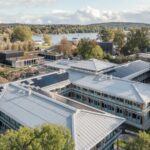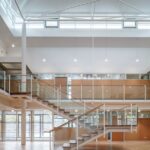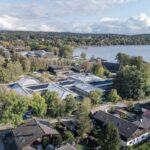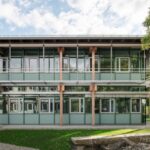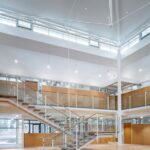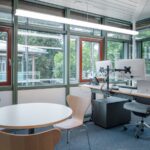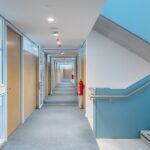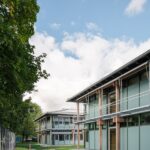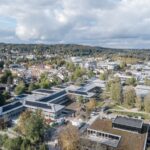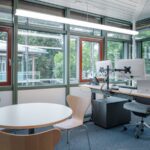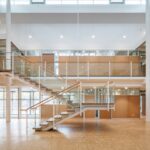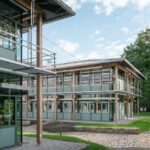Modernizing Office Space: Auer Weber’s Extension in Starnberg, Germany
For over three decades, the district administration office building in Starnberg has stood as a notable landmark, drawing inspiration from the architectural styles of ancient Japan. Recently, Auer Weber undertook an extension project to bring this iconic structure into the modern era while preserving its distinctive character and functionality.

Preservation and Innovation
The primary challenge in extending the building was to seamlessly blend 35-year-old construction, materials, and design elements with contemporary structural and energy standards. Auer Weber aimed to integrate higher structural loads, enhanced fire protection measures, and improved energy efficiency without compromising the building’s visual coherence and historical context.
Site Selection and Design Continuity
The extension was strategically positioned in the southwestern area of the site to maintain public accessibility from Münchner Straße to the lake promenade. The design rhythm of the existing building was mirrored in the new structure, ensuring scale compatibility with neighboring residential developments. Additionally, the extension’s east side features a spacious courtyard, enhancing the overall spatial experience.
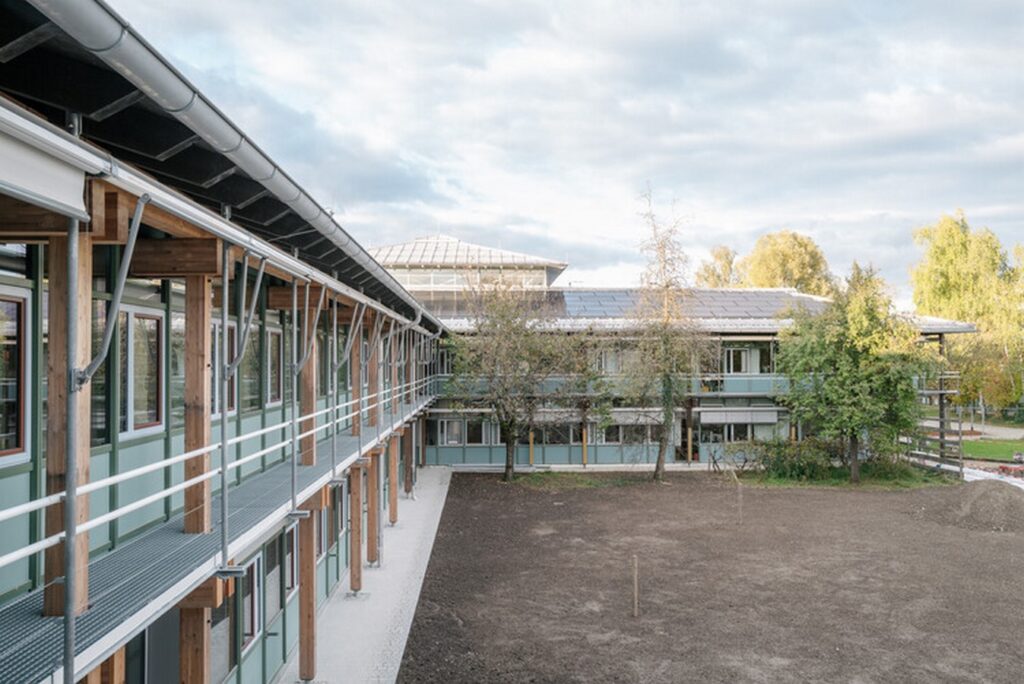
Sustainable Features
In line with modern sustainability principles, the extension incorporates themed courtyards designed for rainwater infiltration, promoting ecological balance. Architectural continuity is maintained through a 1.2-meter extension grid, allowing for flexible office configurations. The modern façade utilizes triple glazing and external sun protection for enhanced insulation and energy efficiency.
Energy Efficiency
To meet stringent energy requirements, the extension integrates a groundwater heat pump powered by a new 250kWp photovoltaic system on the roof. This system not only ensures CO2-free heat generation but also exceeds legal energy-saving standards, achieving a KfW 55 efficient house rating.
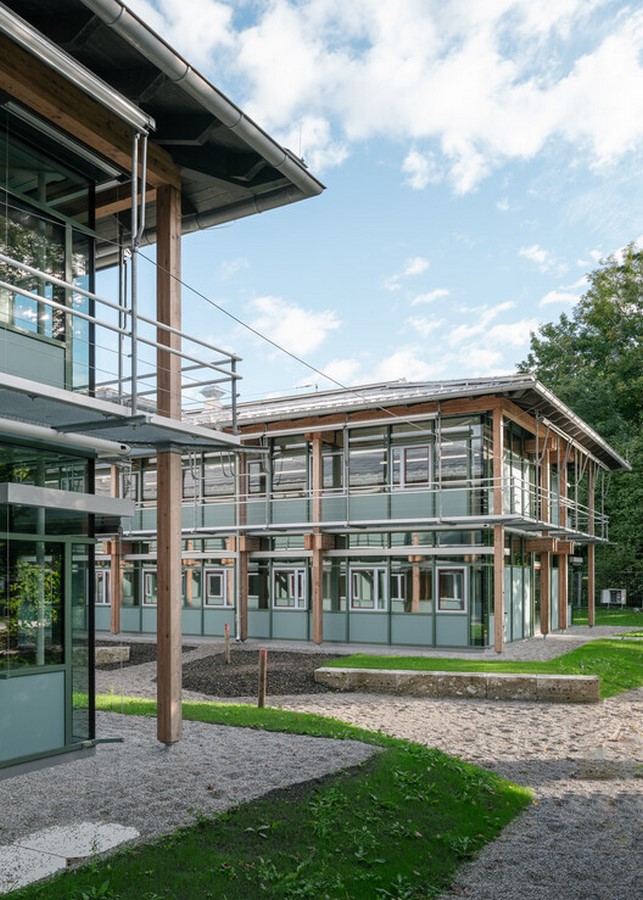
Attention to Detail
While aligning with the existing building’s architectural language, the extension introduces subtle yet discernible design differences. These variations are evident in corridor walls, glass railings, and façade details, adding a contemporary touch while maintaining harmony with the original structure.
Conclusion
Auer Weber’s extension of the district administration office in Starnberg exemplifies a harmonious blend of tradition and innovation. By preserving the building’s historic essence while incorporating modern sustainability features and design elements, the project achieves a seamless transition into the 21st century, ensuring its continued relevance and functionality for years to come.

